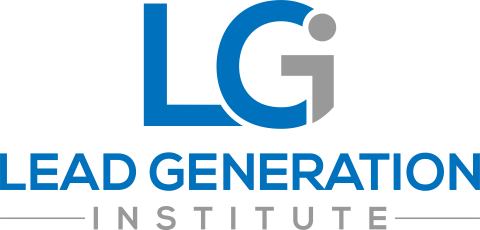As inbound marketing has become a driving force in the industry, the importance of lead nurturing is more important than ever. In the majority of cases, only a relatively small number of inbound leads will make an immediate purchase, leaving more than 9-out-of-10 such opportunities hanging in the air.
On average, about half of the leads in any system are not yet ready to buy, while almost 80% of new leads will never become sales. Companies that implement an effective lead nurturing strategy will see, on average, a 20% increase in sales opportunities, will generate 50% more sales-ready leads and will do so at a 33% lower cost. In addition, nurtured leads make 47% larger purchases than their non-nurtured counterparts.
Despite these favorable numbers, only about 36% of marketers actively nurture their leads. Undoubtedly, this opens up a huge opportunity for their competition – yourself included – to get the upper hand and grab those leads who are not being appropriately tended. But how do you plan for an effective lead nurturing strategy?
How Long is Your B2B Sales Cycle?
One important aspect that any B2B marketer needs to take into account is the average length of their sales cycle. Typically, around half (53.6%) of new B2B sales take less than 6 months to close while 46..4% will take more than seven months or longer to close. With existing customers, on the other hand, the sales cycle is usually shorter.
When it comes to existing customers, statistics show that over 60% (64.3%) of deals take place in 6 months or less. What’s more, around 22% take less than a month. It’s also important to remember that, even though capturing new accounts is an often-cited priority among sales teams, the average revenue share coming from new customers is at just below 30%.
That said, many of the challenges encountered when trying to grow accounts revolve around the difficulty to penetrate business units, with 40% of marketers saying that their communication with the customer needs improvement or serious redesign.
Note keep in mind that all of the statistics on average sales cycle may be skewed because opportunities are not being identified early in the sales cycle as they were in the past. Statistics suggest consumers are 57% all the way through the sales cycle before being identified as an opportunity. Prospects are doing their own research and evaluation long before contacting potential vendors. We suspect the sales cycle is actually longer than the studies suggest reinforcing the need of lead nurturing even more.
Marketing Automation Helps Nurture Leads
Another critical aspect for the creation of an effective lead nurturing strategy is marketing and sales teams alignment. Around 43% of marketers and sales reps say that they don’t have an agreed-upon definition of what a lead is, while 35.3% saying the same thing for a lead nurturing process. This, among many other factors, can result in a lot of strain and tensions between the two departments, with 87% of them having mostly negative things to say about each other.
Marketing automation (MA), however, will align these two departments by providing both with the same goal to aim towards. In short, MA is a tech solution that allows brands to automate their marketing efforts across various channels to improve their efficiency and drive more sales. This will also help you align your marketing efforts and messaging, ensuring that every lead receives the right information at the right time.
Usually, small businesses will keep track of a relatively small number of leads. But over time, and with the top of the funnel getting ever-wider, it becomes increasingly hard, if not impossible for a single person or a small team of people to keep track of every new and old lead as they make their way through the sales cycle.
Marketing Automation Based on Lifecycle Stage Segmentation
Since your interaction with leads and accounts will vary depending on what lifecycle stage they are in, it’s extremely useful to segment your contacts based on that information. You will first have to develop personas, then organize your contacts based on exactly where they are in your sales cycle. These stages can be as follows: subscriber, lead, marketing qualified lead, sales qualified lead, opportunity, customer, evangelist, etc.
Marketing Qualified Leads (MQL) and Sales Qualified Leads (SQL), in particular, should dictate which leads your sales team will accept from marketing. MQLs are those people who’ve shown themselves to be more engaged and meet the minimum qualification criteria but who are not yet fully-fledged opportunities. SQLs, on the other hand, are those prospects who’ve been identified and accepted by the sales team as being sales ready and an opportunity has been created as well as forecasted.
By using this method of automated lifecycle stage segmentation as part of your lead nurturing strategy, you will not only take into account the actual length of the average sales cycle, but you will also help your sales and marketing teams be on the same page.
Developing a Lead Nurturing Cadence
Lead nurturing is much more than just sending a series of emails to a prospect to stay top of mind for whenever the prospect become sales ready. Start developing your lead nurturing cadence by first identifying your average sales cycle i.e. 6, 9 12 months etc. Then map your content to persona i.e. End user, Decision maker, Financial authority to each stage of the sales funnel. We typically recommend these sales stages:
Learn – I think I have a problem
Solve – How do I solve that problem
Compare – Am I solving the problem correctly
Purchase – Help me make a purchase decision
Loyalty- – Show me you appreciate me as a customer
Develop a list of common FAQ’s for each persona at each stage of the sales cycle. These are the topics you should include in your nurturing program. Ideally your content links to the content in other stages because you never really know where a prospect is in the sales cycle without asking or tracking their content consumption. By having links to content in other sales stages your prospect can jump from stage to stage increasing the chance of being relevant to that prospect.
Example, all because a lead is first identified doesn’t necessarily mean they are in the “Learn” stage of the sales cycle. They might be much further down the sales cycle i.e. the “Compare” stage and are doing research on other solutions.
If you want to learn more about lead management and lead nurturing, please feel free to contact us at any time or subscribe to our newsletter.




